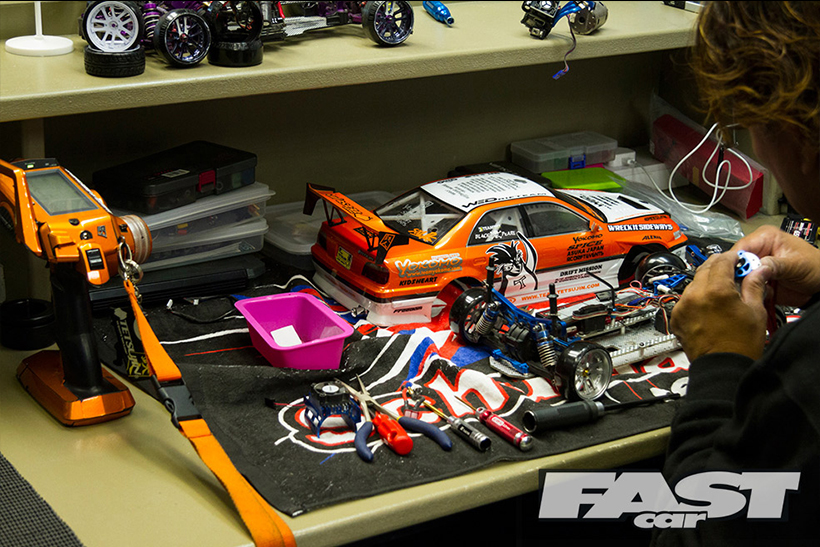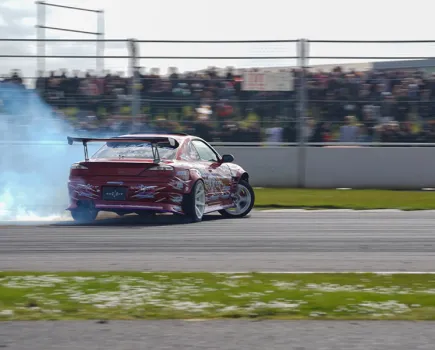Drifting is fun and expensive in equal measure, but what about doing it on a smaller scale? We take a look at the bonkers world of RC drifting.
Drifting a full size car is one of the most fun things you can do but to really enjoy it you need a dedicated drift car and a track to use it on, and that sure as hell rules it out for a lot of us.So what can you do if you love drifting but don’t have the time, money or space for a dedicated sideways smoker? Well, you still drift, but on a smaller scale; 1/10 scale.
While some people will dismiss the idea of RC drifting instantly as kids playing with toy cars in the street, the reality of it is very different, as not only do people of all ages drift at dedicated tracks, but RC drift cars also have an incredible amount of tuning and modification options open to them, and with the right setup and right driver, the actual drifting is incredibly realistic.
Another thing RC drifting is great for, especially for the younger readers yet to step in to the murky depths of drift car ownership, is to get a great idea of the basics, not only from a car control point of view, but perhaps most importantly, getting used to how various modifications and setups change how a car drifts. Granted these cars may be 1/10 scale and you’re not physically sitting in the things, but the way the cars behave, drive, and drift is remarkably comparable to real life 4WD and RWD drift cars. And gaining experience with them is a real head start in knowledge and ability over someone who’s totally new to the game.
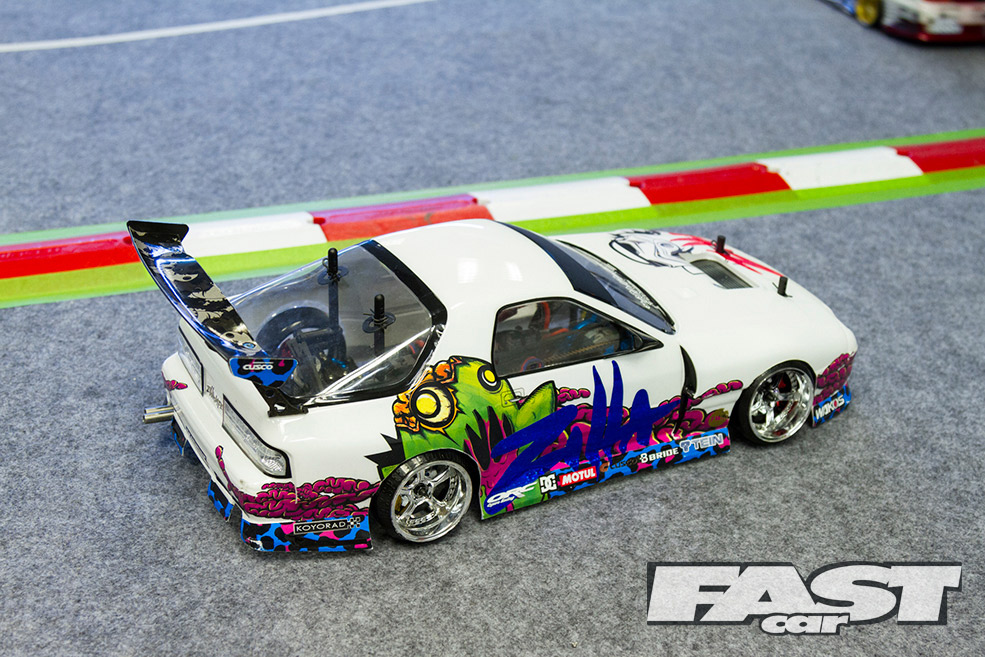
THE CARS
RC cars they may be, but don’t expect to grab your old monster truck from the attic and start pulling some massive skids. While you can certainly convert an RC Touring Car chassis to drift spec, in reality, if you’re making a fresh start, and if you’re reading this you probably are, you’re better off buying a dedicated drift chassis. We will cover these further on in this feature.
So what cars can you actually get? Well, from a looks point of view, almost anything you like, as there’s a huge choice of bodyshells to fit on the top of a RC drift chassis, most easily interchangeable, so if you want to drift an RX-7 one day, and a Mustang the next, that’s no problem at all.
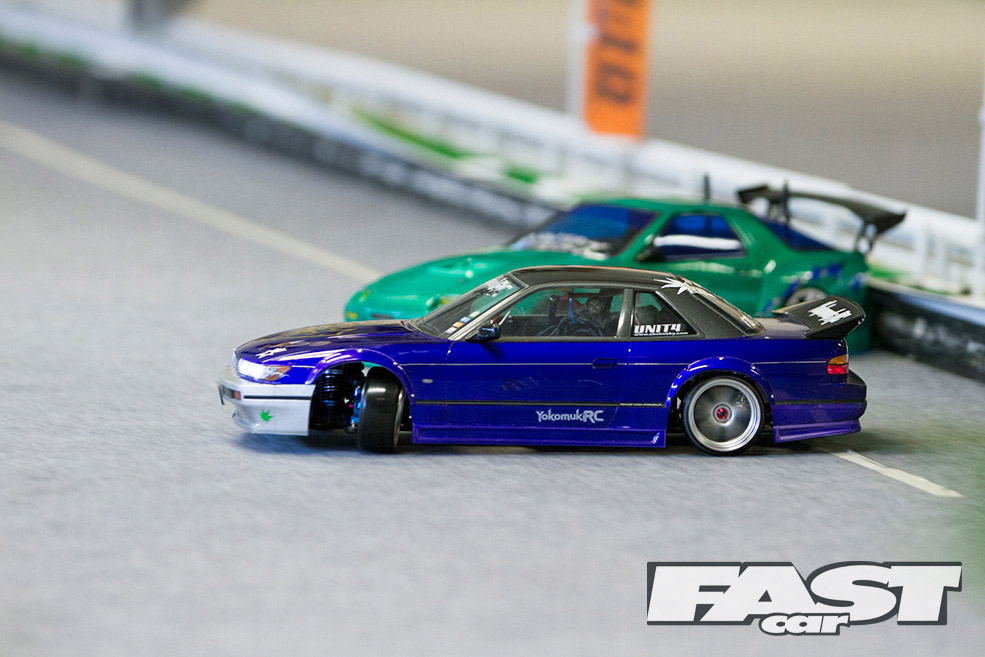
DRIFTING? BUT AREN’T RC CARS ALL 4WD?
Yes, almost all RC cars are 4wd, and while drifting is associated with rear drive vehicles, people like Ken Block and the crazy folk at Gatebil prove that if you’ve got enough grunt, 4wd drift awesomely. With something as twitchy and powerful as an RC car too, having power to the front wheels helps prevent a spin, especially for a beginner.
For a complete beginner, the traditional RC 50:50 front:rear power split is fine, but while it’s great fun, adding more power to the rear wheels than the front is the way to go for the full drift experience, and to achieve this you need a CS setup.
CS stands for Counter Steer, and that, just like traditional drifting, is a key car control skill needed for this setup. The reason counter- steering is vital is because, while there is still power fed to the front wheels, adjustments are made to the differentials to the rear wheels which are turning faster then the fronts. CS setups of around 1.5 to 1.8 is common, though more is possible, which mean rears turn 50% to 80% faster than the fronts, making the drifting look more realistic than straight 50:50 4WD cars, and it’s a little trickier to control too, needing more real-world drift techniques.
The trickiest, but certainly most realistic, is full RWD. Without any power to the front wheels this is the most realistic, but also the most difficult setup there is. Without the right suspension and tyres, not to mention a gyro, it can feel next to impossible. With the right gear, a good bit of practice, and the all important gyro, the results are not only amazing fun, but incredibly life like too.
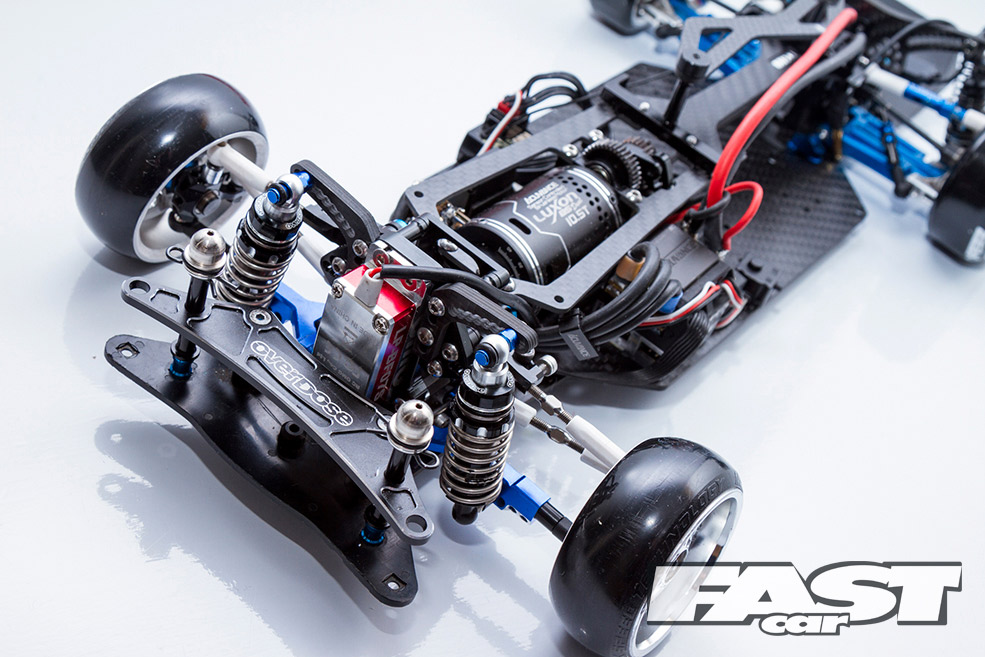
WHAT’S A GYRO ANYHOW?
A gyro is a clever bit of electronic kit, originally used for RC helicopters to stop them spinning wildly out of control. While it’s not something you use in 4WD drift cars, it not only makes RWD RC drifters easier to handle, it actually makes them handle more realistically too.
Using a mix of electronics and witchcraft, gyros try to prevent things from rotating on a certain axis, and in RC drift car terms, that’s left and right. If the gyro was set too high for example it would simply prevent it drifting. Gyros have adjustable strength and, set up correctly, give RWD drifters the fine balance that not only makes them controllable, but more realistic to watch.
You may think that using a gyro to make it easier is cheating, but because of how RC steering works, without a gyro the car would handle a lot less realistically. In a full size car the steering will self-centre to some extent when sideways, meaning not only will the car pull itself straight when you let off the gas, but this self-centring makes holding a car sideways around a corner without spinning out much easier.
On an RC car the steering is controlled by a servo which gives very little self centring, so without a gyro to give you the self centring action you’re constantly fighting with the controls. Obviously this isn’t a lot of fun and isn’t all that great to watch either, especially when the main aim is to replicate the look and feel of full size drifting.
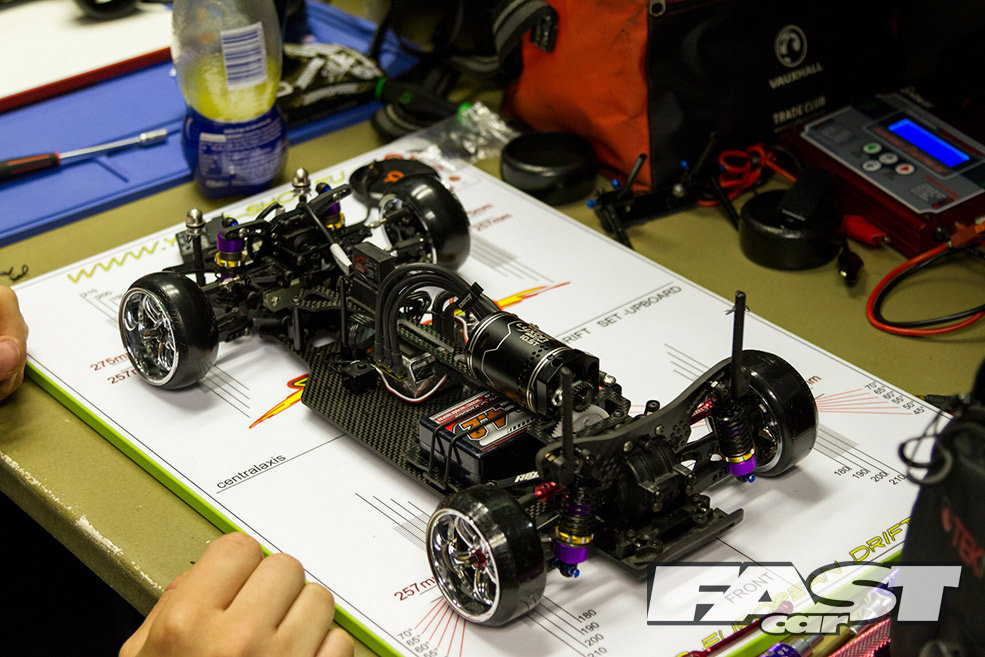
RC DRIFTER CHASSIS OPTIONS
As a starter drift car, the MS-01D RTR from MST is literally ready to go for around £300. This one is not only perfect for a beginner, but it’s very easily upgraded to a CS setup and has countless body and tuning options available. MST actually have a huge range of chassis available, with CS and even full RWD specific setups; but expect to pay over £500 for a top spec RWD chassis.
Yokomo is another popular brand, a little more expensive than MST, but their YD-4 CS chassis is widely considered to be the best out the box chassis for the money. The YD-4 is easily upgradable to full RWD, and soon the YD-2 full RWD chassis will be available too, which there’s little doubt will be fantastic.
On the budget end of the scale the Sakura D4 is an effective option for a lower cost, and is considered to be very capable in CS and RWD form after a few upgrades.
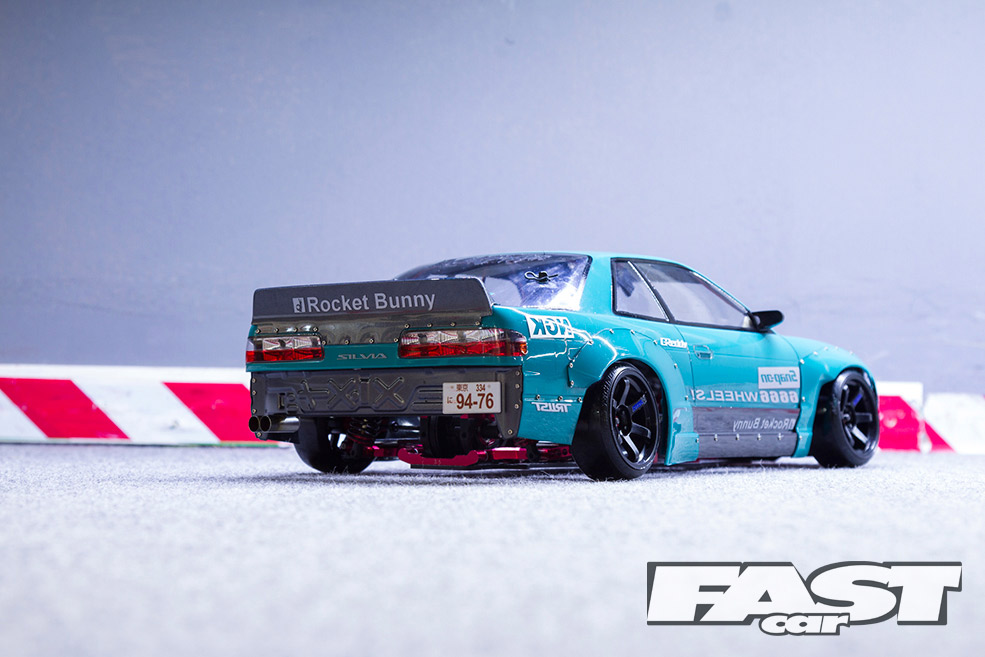
I’VE ALREADY GOT AN RC CAR THOUGH, CAN’T I JUST CONVERT IT TO DRIFT SPEC?
While you can convert a RC Touring Car chassis for drift use by fitting drift tyres and a spool rear diff, in this day and age with so many drift specific chassis available at a low price, it’s really not worth the effort.
We could go in to detail about exactly how it’s done, and indeed a lot of experienced RC drifters started down this route (if you go back a few years there just wasn’t the RC drift cars and parts available that there is now), but you guys are lucky that the scene is much bigger now. In other words, just go get a dedicated drifter – you won’t regret it.
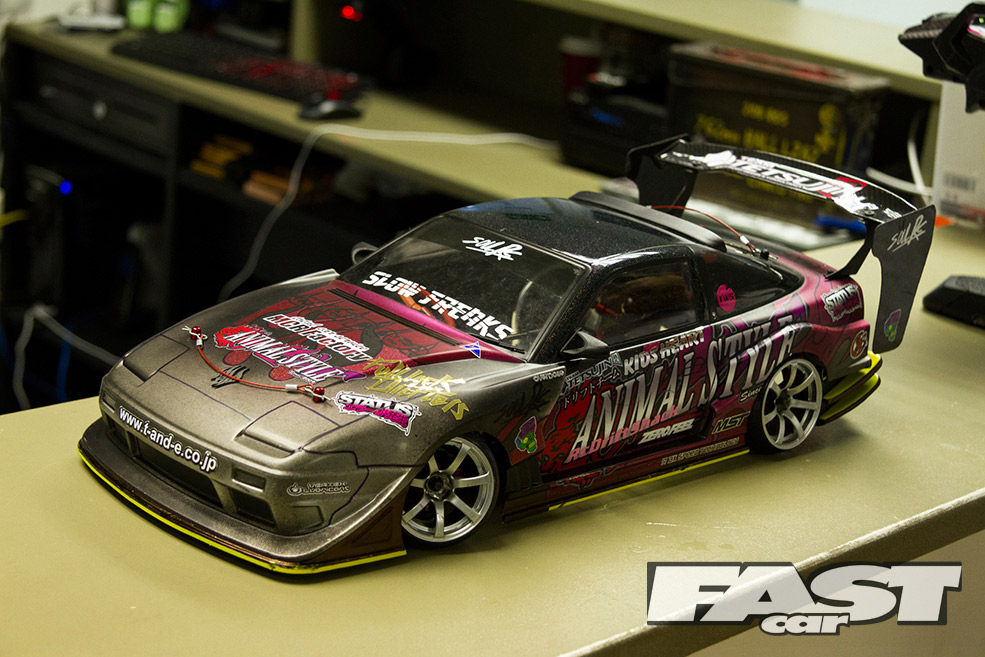
SO I’VE BOUGHT A RC DRIFT CAR, WHAT MODS CAN I DO?
Just like with full size drift cars, there’s an incredible amount of performance and cosmetic modifications possible, and while there’s so many you could fill an entire magazine with them, here’s a few main options to give you an idea…
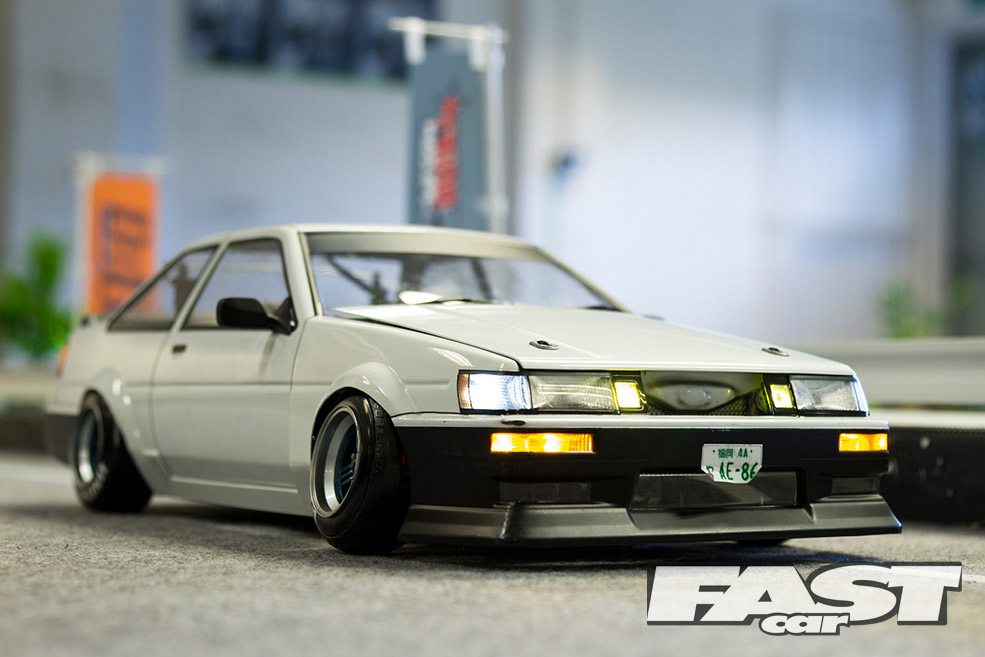
BODY MODS
Looks are a huge part of drifting, and a huge variety of bodyshells are available. So whether you want to drift a BMW M3, a famous D1 drift car, or even something crazy like a truck, there’s body shells you can buy, paint, and sticker up to create your dream drifter. Thanks to the huge popularity of RC drifting in Japan, drift-specific replicas of famous drift cars, complete with the correct bodykits, sticker sets, and more, are available, and there’s even separate body parts such as rear wings and bumpers available for some shells.
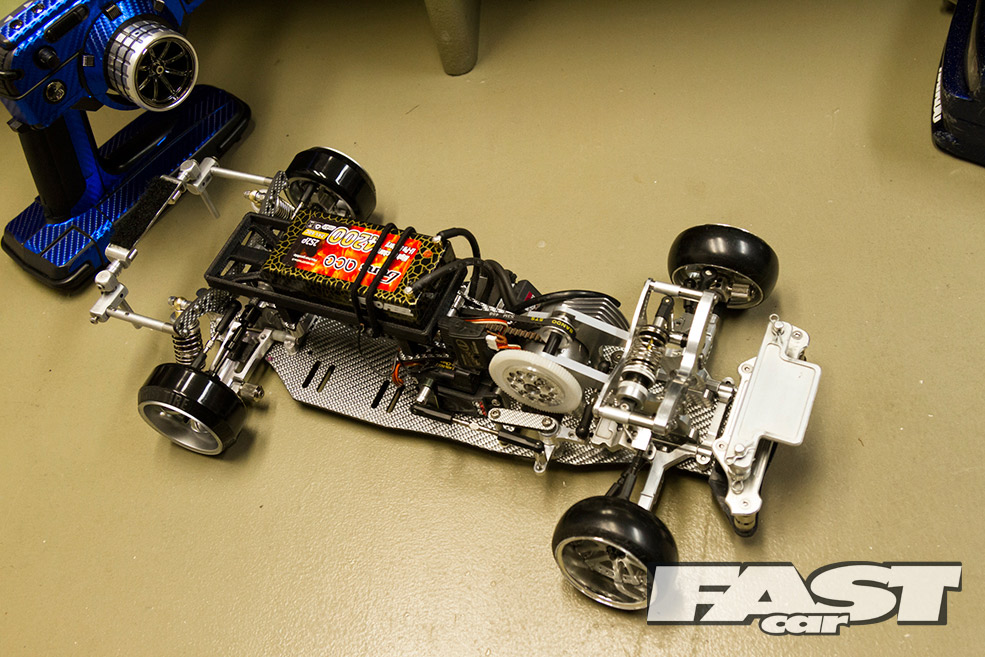
SUSPENSION UPGRADES
When it comes to uprated and adjustable suspension, RC drifting is as close to 1:1 as you can imagine, just much cheaper and easier! All good RC drift chassis have fully adjustable suspension geometry straight out the box, not to mention drift specific spring and shock setups, but a huge range of upgrades are available to get the car handling exactly as you wish. In fact, even height adjustable coilovers exist for RC drifters with a big budget!
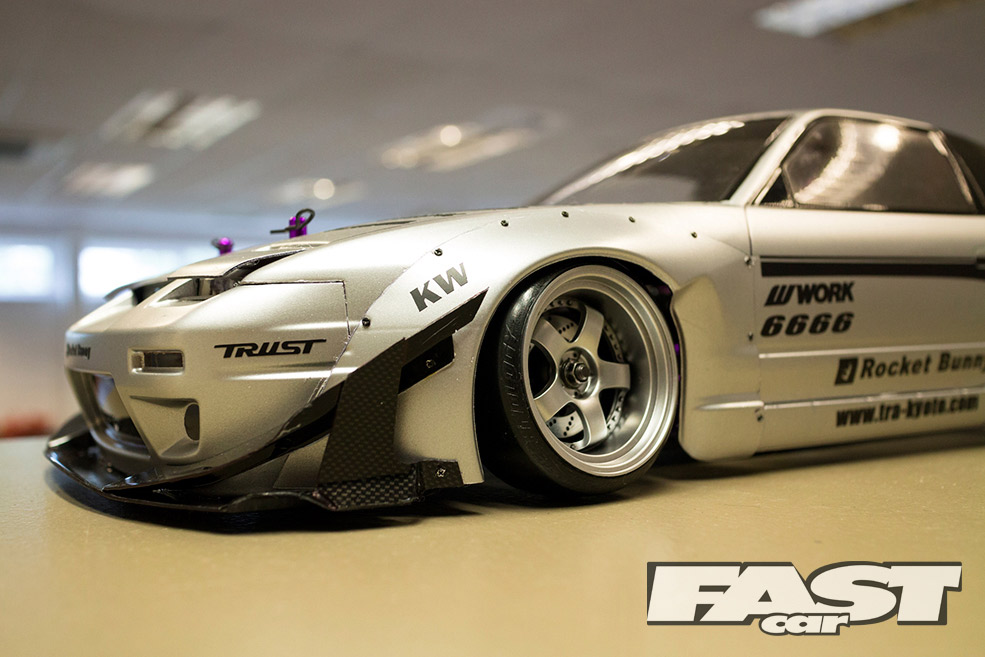
WHEELS AND TYRES
The range of aftermarket wheels available is pretty amazing, most with a range of widths and offsets too, allowing you to get the look of your car exactly how you want it. Thankfully, wheels start at around £10 each rather than 10-30 times that in 1:1 cars, so you can be a RC wheel whore without breaking the bank.
When it comes to tyres there are a number of different compounds to suit different surfaces, and for cars with a big CS ratio or running full RWD, both of which require a lot more driving while on big steering angle. There are specific front tyres that give maximum grip in these situations too.
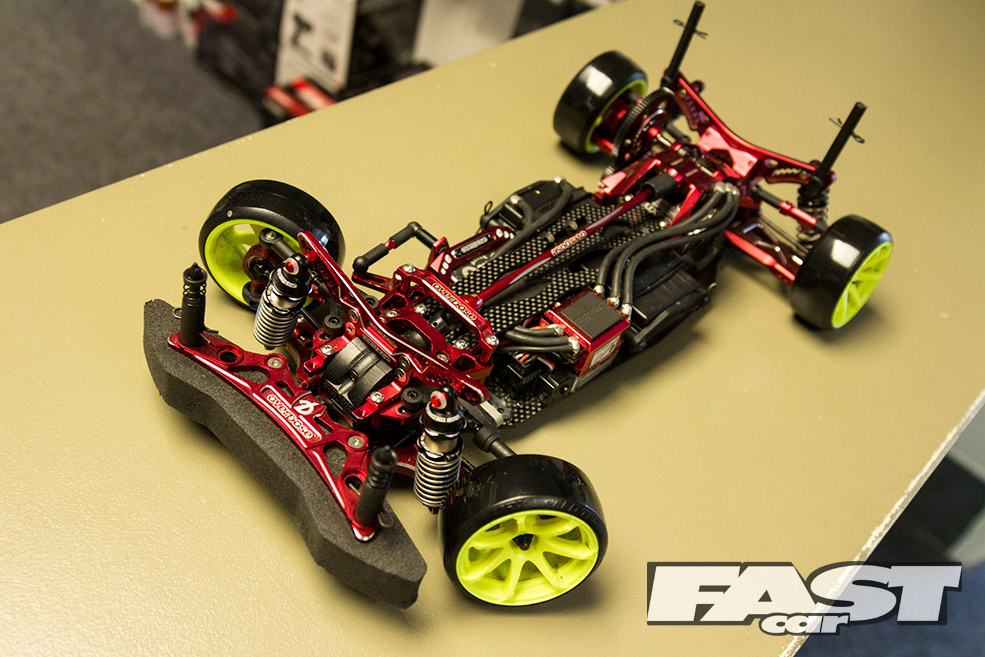
CS AND FULL RWD CONVERSIONS
As already mentioned, most drift 50:50 4WD drift chassis are able to be converted to CS setups or even full RWD with the various upgrade parts on the market. On factory CS setups the ratio can easily be changed to suit your skill level, your personal preference, and the surface you’re running on.
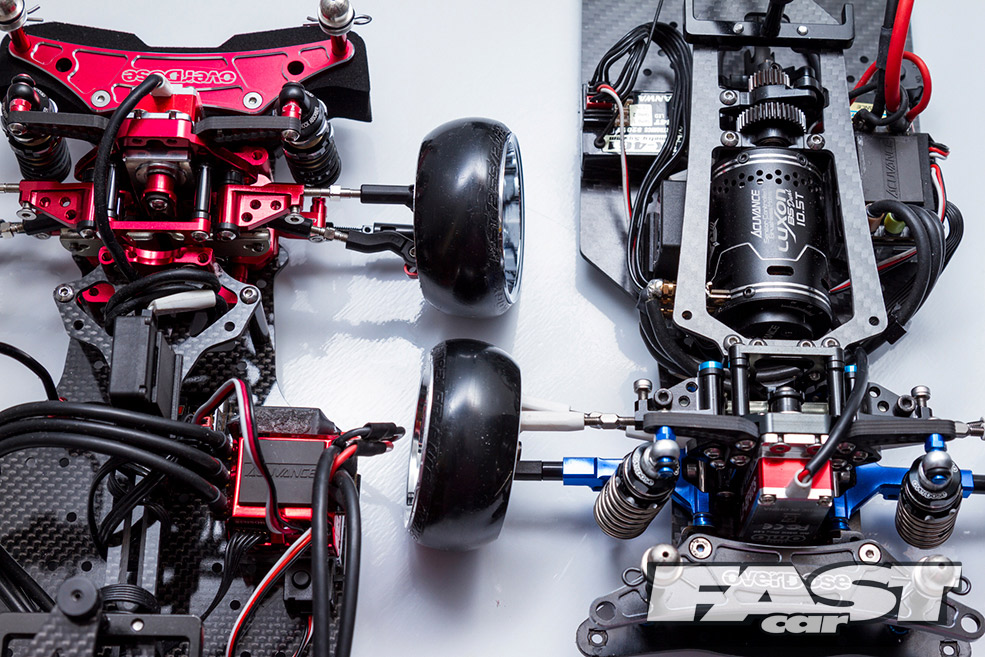
MORE POWERFUL MOTORS
RC motors are measured in turns, which is the amount of winds in the electric motor’s coil, and the lower the number, the more powerful it is. A 9T motor for example, has a lot more power than a 17T motor. For drifting you ideally want a sensored brushless motor for the best throttle control, but other setups do exist. Unlike 1:1 drifting though, bigger isn’t always better in the RC world, less powerful motors tend to have a smooth power delivery, and engine power is often matched to the surface they run on. For this reason people often own more than one motor.
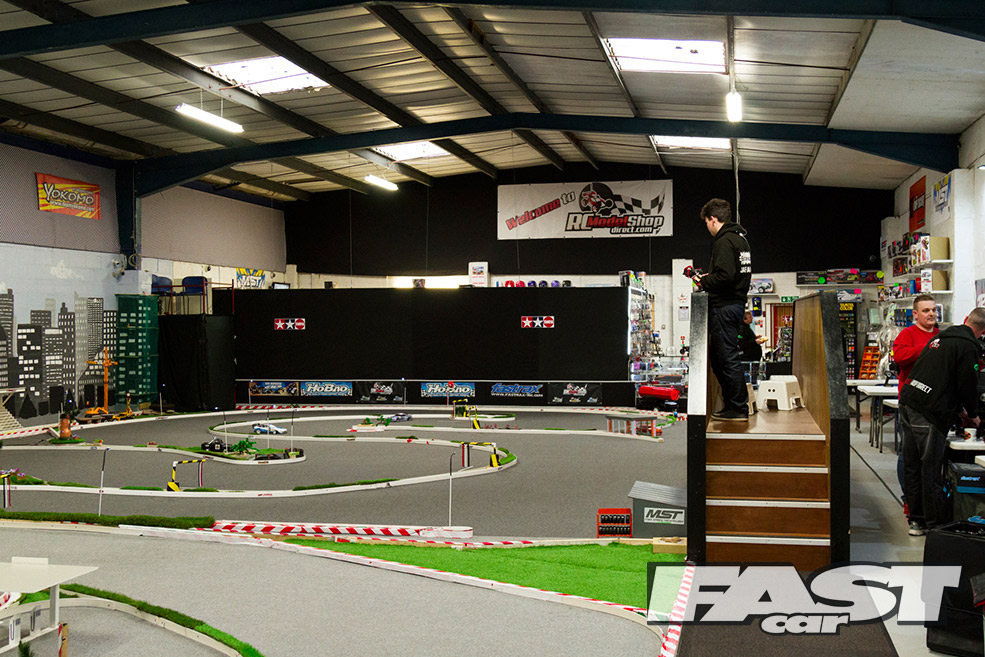
WHERE CAN I USE A RC DRIFTER?
While you can use an RC drifter practically anywhere there’s a flat surface, dedicated tracks make RC drifting a lot more fun and help you build your skill level much faster. While there are countless RC tracks around the UK, some notable ones used frequently or exclusively for drifting include Soul RC in Northampton, RC Model Shop Direct in Wakefield, NRD also in Wakefield, GetYourDriftOn in Middlesbrough, WRCC in High Wycombe, and Midlands Drift Society in Tamworth. A quick Google search will find your nearest track.
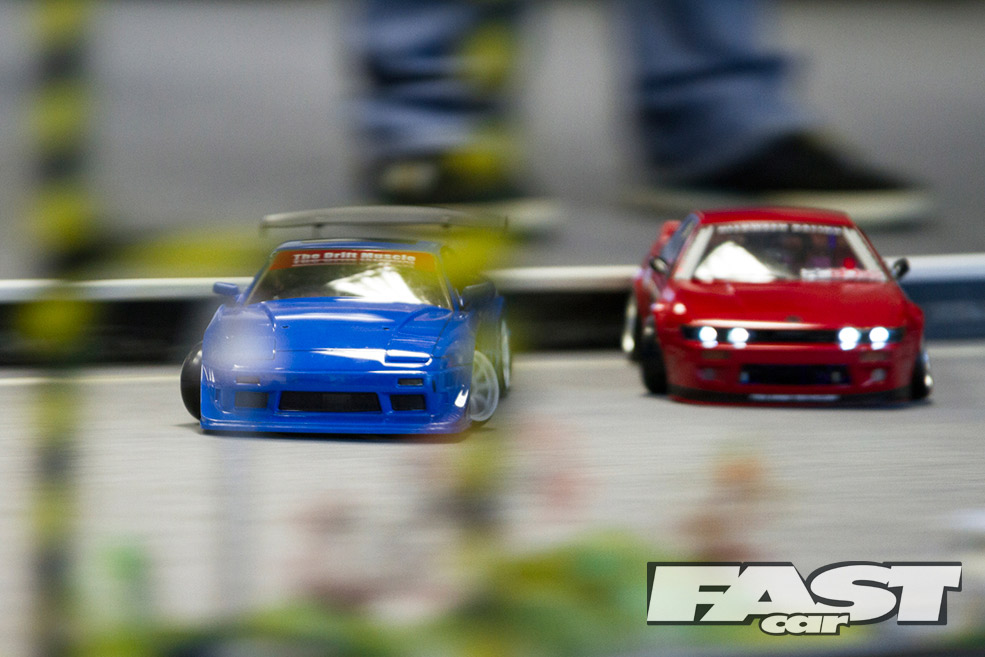
COMPETING
They always say you shouldn’t run before you can walk, but it’s always good to have something to aim for, and for the competitive among you there are UK, European, and even world drift championships for 1:10 scale RC drifters. The judging is much like conventional drifting, and the standard of car control is pretty amazing. Just don’t expect to buy a RC drifter and be able to instantly start winning trophies, these guys have some mad skills! Still, it’s a great thing to aim for.
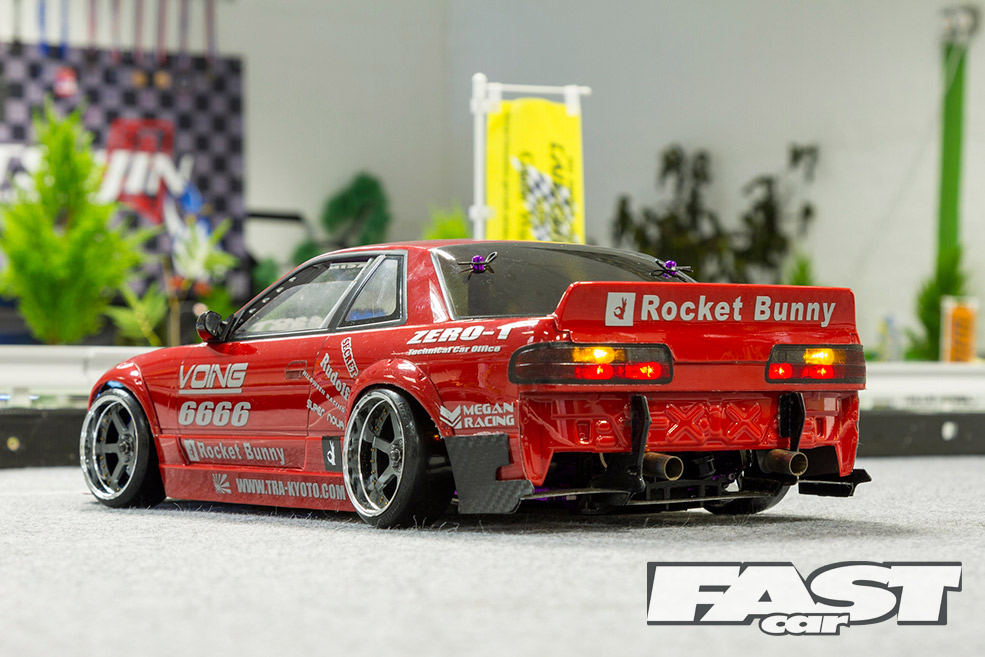
WHERE DO I GET ONE FROM?
While there are various UK dealers of RC drift cars like MST, Yokomo and HPI, the number one dedicated car and parts supplier is Soul RC. These guys stock a truly huge variety of parts and have an almost unrivalled knowledge of RC drift cars. If you’re looking for a top-notch drifter, it’s certainly worth checking these guys out Soul RC.
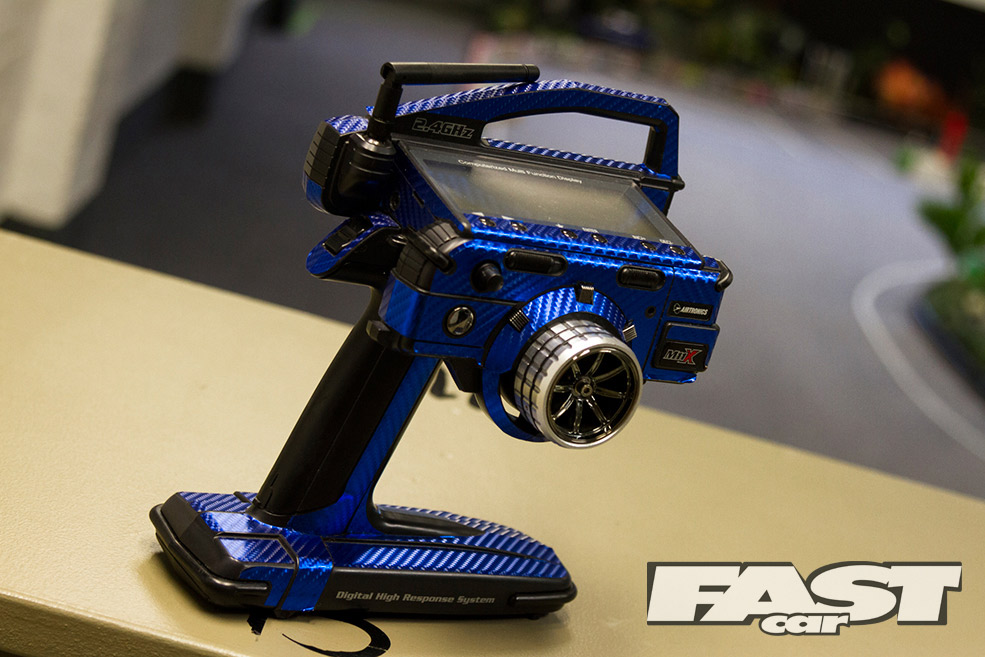
A WORD FROM THE WISE…
I’m sure by now you’ve realised the world of RC drifting is a complex place where experience counts for a lot, so here’s a few words of advice from long-time RC drifter Mark ‘Blacky’ Blackburn from GetYourDriftOn…
“First up, don’t make the mistake I made and convert a touring car chassis for drifting. I spent a small fortune converting it and looking back now I could have just bought a nice drift chassis for a lot less.
The RWD Vs CS debate will drag on, but honestly it’s personal preference. I started with 50:50, then progressed to CS, and now I prefer full RWD as it feels more realistic, but that’s just me.
Some people instantly get on with CS and struggle with RWD, and others struggle with CS setups but pick up RWD no problem at all. These days if anyone asks me what’s best, I just hand them two controllers, one for a CS car and one for a RWD car, and then let them make their own mind up.
If you’re thinking of getting in to RC drifting check out your local track or club, as people are always more than happy to give advice and help, but please listen to them, as most have been in to RC drifting for a long time and have been there and done it all. You really can learn from their experiences and previous mistakes!
Last, don’t get over excited and buy a cheap RC chassis off Ebay just because it has the word ‘drift’ in the description. While most cars can be upgraded, why bother when you can buy a good MST drift chassis for around £175, it’s really not worth trying to save a few quid buying anything cheaper.”
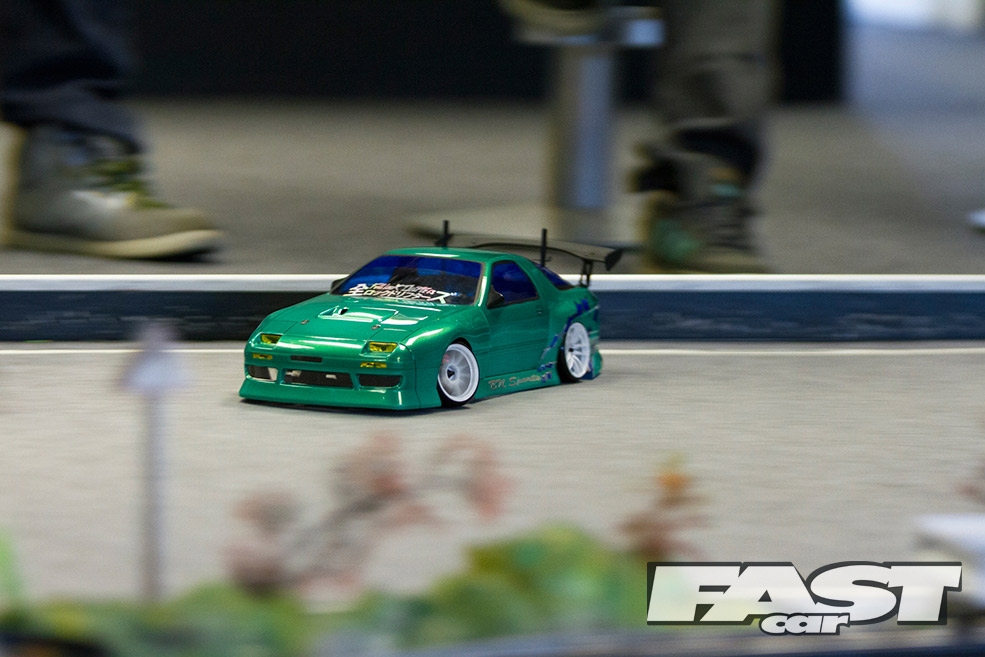
BIG THANKS TO…
Mark ‘Blacky’ Blackburn, track owner at GetYourDriftOn for the help compiling this feature. Two thumbs fresh go to the guys at Zerofeels for the pictures too.
Words Stav Photos Luke Pettigrew

